A PERIPATETIC JOURNEY
|
not all who wander are lost
|
MAIN BLOG
|
When we had done all the essential boat work (there is always some nonessential boat work, i.e. things needing to be fixed, installed, or replaced that do not immediately threaten safety or comfort, left on the to do list), we decided it was time to leave. The weather looked favorable for our 2-3 day passage to Bonaire, so we left the dock on the afternoon of November 5.  Looking back toward St. George's Looking back toward St. George's Once we were out of the harbor, we raised the main and unfurled the new screecher. Although the winds were light, we moved right along under our new sail. With the wind behind the beam, the motion of the waves caused the boom to swing back and forth, banging in an annoying way (and alarming to Kendall, who worries, usually unnecessarily, about the boat breaking). Soon we dropped the main to stop its banging, leaving the screecher up to move us along. It turns out the main wasn’t really helping as we didn’t lose much speed without it. And speed us along, it did. We alternated between sailing with the screecher (on a furler) and the asymmetrical spinnaker (dousing sock). The spinnaker is a fair bit larger than the screecher so it is faster, but dousing it (getting it down and in the bag) can be challenging if the wind comes up. To be conservative, we have only used the spinnaker during the day so far. It was an absolutely wonderful downwind sail. Actually, this was our first significant downwind sail after more than 4,000 miles of sailing this boat! We found ourselves traveling at much faster speeds than we were accustomed to with our standard sails. We quickly realized that our boat polars (estimated boat speeds for a ranges of wind speeds and angles) that we had been using in our weather routing software needed to be updated for the new sails. We use the software (Predict Wind) to estimate passage times and optimal routes given the weather forecast we download from our slow satellite connection. We left Grenada in order to time a morning arrival in Bonaire. But because our new sails were so much better for downwind sailing, we were soon way ahead of schedule and realized we would arrive in the middle of the night. We do not like the idea of coming into a new place in the dark so we we’d have to slow way down. In this case it meant that instead of 8-10 knots we had been making, we would have to slow down to ~4-5 knots for the last stretch. How painful to not use such great wind! We saw the lights of Bonaire around 0400 and sailed around the southeastern tip of the island around 0530. As the sun rose behind Kralendijk, we sailed slowly toward the mooring field. Using our Delorme InReach satellite tracking device (this is what generates the map on our main page), we had kept in touch with our friends on SV Maple throughout the passage. They kindly put a “taken” bouy on the mooring ball next to them so the families could be close to each other. We hailed them on the VHF as we approached Kralendijk and Darryl generously launched his dinghy to hand us the mooring lines as we approached. Within minutes we were swimming in the AMAZING water and the girls were waking up the anchorage with their excited greetings.
2 Comments
After a lot of time spent on school work, boat work, and provisioning, we decided to rent a car and spend a day exploring the island. As we drove uphill away from St. George’s the road curved back and forth providing beautiful vistas of the harbor and Caribbean below. One of our stops was Grand Etang Lake. This crater lake in an extinct volcano is located in the mountains of south central Grenada. There is evidence that Grand Etang is connected to the active underwater volcano, Kick Em Jenny, as it was seen bubbling at the same time as Kick Em Jenny. There is also supposed to be a mermaid living in the lake, although we did not see her. There is a small visitor center at Grand Etang, where we read about the geology of the Caribbean. While there, we took a short walk to an overlook from which we could see Carriacou (also part of Grenada; see last May’s blog post). Another stop on our Grenada road trip was Belmont Estate. Kendall had been wanting to visit since we first came to Grenada, and since it was her birthday...A popular agri-tourism destination, Belmont Estate dates back to the 1600s when large plantations were established in Grenada. Although very few plantations remain in Grenada today, the Belmont Estate’s agri-tourism approach has enabled its continued survival. Although Hurricane Ivan hit the estate hard, many spices are still grown there, including cinnamon, pepper, cloves, bay leaf, ginger, turmeric, nutmeg and mace, and of course, cocoa. There is a restaurant onsite serving delicious food with both West and East Indian flavors, tours, a shop, and a museum.
After having a wonderful birthday lunch at the restaurant, we took a tour of the estate with Kelly. He showed us the entire chocolate-making process beginning with the cocoa trees and ending with a taste of cocoa tea and a visit to the estate’s chocolate shop. We also walked through the beautiful property. Kelly pointed out all the wonderful edible delights growing on the estate, often picking a sample for us to try. Among many other treats, he opened an immature cocoa pod so we could taste the beans inside (Marin especially liked these). He pulled a small pod off another tree (it looked like a large peapod) and opened it to show us three very fuzzy seeds inside. They weren’t to be eaten, just held in your mouth to enjoy the sweetness before spitting them out. We can’t remember what they were called, but they were like nothing we’d ever tasted before. From Belmont Estate, we drove down the Atlantic side of the island to St. George’s University at the southern end. For some reason, we have a tendency to visit college campuses along our travels. St. George’s began as a medical school in the 1970s and has expanded to include veterinary medicine, graduate studies, and arts and sciences. The campus is stunningly located on a hill overlooking the Caribbean. We all concluded that it would be a lovely place to go to college – we cannot imagine a college campus with more beautiful views. We ended the day with snacks and drinks at West Indies Beer Company. Kendall is particularly fond of their Sundown Cider. After launching on October 24, we went to Port Louis Marina in St. George's to continue preparations for our 2-3 day passage to Bonaire. It was also a good opportunity to have a regular boat school schedule since the routine had been disrupted by our travel to Grenada and time at the boatyard. We had two more sails to reinstall, radar to replace up on the mast, and many other work projects.
It was also a good chance to explore more of the island before we headed west. Last spring when we reached Grenada, we were primarily focused on the preparations for haulout and storage, and hadn't been able to do any touring. Grenada is a beautiful island, with incredible scenery and warm and welcoming people, and we were looking forward to more time there. One weekend, we went to the large outdoor market where you can find anything from bananas to nutmeg to rum to watch repair. While Brian and Eoin explored the market and checked out the meat market, Kendall and the girls went to Art Fabrik, a batik studio and retail store in downtown St. George's. The array of beautiful batiks made into skirts, pillows, shirts, pants, dresses, notecards, purses, and many other items was quite overwhelming. Lilo, one of the owners, invited us upstairs for a demonstration of batik making. She walked us through the process and made a small piece for us to dye when we got back to the boat (we tried coffee, but it didn't stain enough, so we are planning to use some of the girls' hair dye sometime soon). Another time, we visited the chocolate museum in downtown St. George’s. Grenada is widely known as the spice isle, producing nutmeg, cinnamon, cloves, bay leaves, ginger, and turmeric. Unfortunately, in 2004, Hurricane Ivan decimated the nutmeg industry. Since then chocolate has replaced nutmeg as the number one agricultural export of the country. While visiting the museum, we were able to try our hand at grinding the cocoa beans, learn about the history of chocolate in Grenada both before and after European settlement, and most importantly, sample and buy some delicious Grenada chocolate products. We spent a busy couple of weeks at Kendall's family farm on the Chesapeake Bay packing and weighing and re-packing our luggage to make sure no bags were overweight. We'd researched the baggage costs and decided it made sense to have one overweight bag. The bags were quite heavy because in addition to clothing we were bringing art supplies, the kids' school books, and lots of boat parts. We packed the boat parts in their own bags because they would need to stay at the airport in Grenada until our customs agent could clear them through. Grenada imposes high customs duty on imported items, but owners of yachts in transit (still feels weird to call our home a 'yacht') can jump through a few administrative hoops and have the duty greatly reduced. Once we were packed, we loaded up our rented van and headed to the airport. The thoughtful American Airlines gate agent urged us to redistribute items in our bags so that none would be overweight. After shifting items around we were able to get all 10 bags to right around 50 pounds each, give or take a few. This process took some time and quite a lot of space on the floor so we were glad to have arrived at the airport so early! Despite flight delays that threatened to have us spend the night in Charlotte rather than Miami, we did make it to Miami around 1:00am. After an uneventful flight the next morning, we arrived in Grenada in the early afternoon. It took us a while to get through immigration, both because we were last off the full airplane and because it wasn't until we were next in line that Kendall realized that she had misunderstood the customs form instructions provided on the flight and hadn't filled out forms for the children. Kendall is the family's designated form-filler-outer, and usually does a better job of it! Chalk it up to the late night/early morning/long flights! After finally getting our passports stamped, we stopped by customs to leave the boat parts for our agent to pick up later. We stepped out into the tropical heat and boarded a taxi for the ride to the boatyard. The change in climate was quite jarring after the fall weather of New York and Virginia and we were a bit out of sorts for the first 36 hours or so. The next week was a whirlwind of boat organizing and project management, homeschooling, making new friends at the boatyard, and enjoying our air-conditioned apartment as much as possible. Since hurricane season was winding down, the boatyard was busy with boat owners finishing the last of the summer work and pre-launch preparations. It would only get more busy in the next few weeks so the yard manager, staff, and contractors were working long hours to not disrupt the launch schedule. Ours was scheduled for October 24; as the week progressed, we began to doubt whether or not everything would be finished on time for our launch. If we missed our launch, it could be another week or two before there was another slot available. Despite the heightened activity levels around the yard, it was still the Caribbean. When it rained (often), workers would take shelter under nearby catamarans, have a long lunch break, or depending on the work they were doing, just call it a day. The last remaining job was a big one: to reinstall the sail drives (transmissions) in both engines. These are located beneath the engines, which necessitates the unbolting, lifting, and propping of the big diesels while the sail drives are installed. This must be done on the hard because the sail drives are below the waterline and removing them opens a large hole in the engine room floor. Despite the intense heat and humidity, Calvin, the mechanic, and his helpers completed the difficult and dirty work just in time. Slowly, the tractor pulled Counting Stars down the main fairway toward the boat launch. Two divers waded into the water to help guide the tractor driver and make sure the boat didn't float off the paper too quickly. Once the trailer was backed to the edge of the water, we all climbed up a ladder onto the boat. The mechanic and his helpers also boarded the boat as they were going with us on a brief sea trial to make sure the engines and sail drives were correctly reinstalled and working properly. Lines were tossed to dockhands to keep Counting Stars from moving side to side too much in the slip. As a light rain began to fall, we felt that floating feeling once again. We were in the water! Everything went fine during the sea trial, so we tied to a dock briefly before heading out into the bay to anchor for the night. We made a simple dinner of spaghetti and enjoyed our first sunset at anchor in months! The next morning, we pulled up the anchor and motored around the south end of Grenada toward St. George's. It was wonderful to be underway again! Our plan was to stay at Port Louis Marina for a few days to take care of the last boat jobs, catch up on boat school, sightsee, and wait for a weather window for our ~3 day passage to Bonaire.
|
AuthorMcGlynn family 5 (Isla, Marin, Eoin, Kendall, and Brian) sailing Counting Stars Instagram: svcountingstars
Archives
February 2019
Categories |
Proudly powered by Weebly

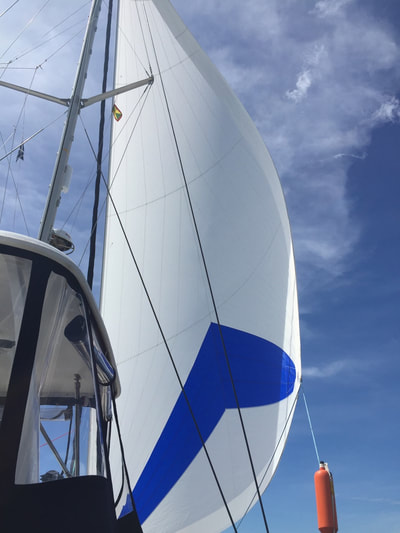
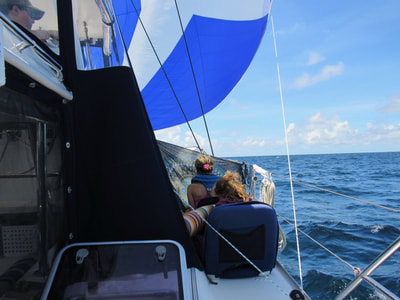
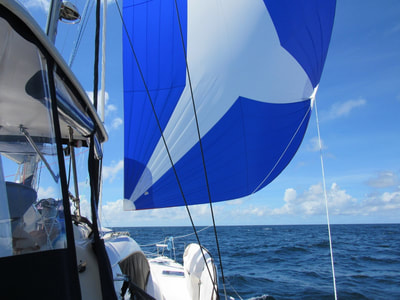
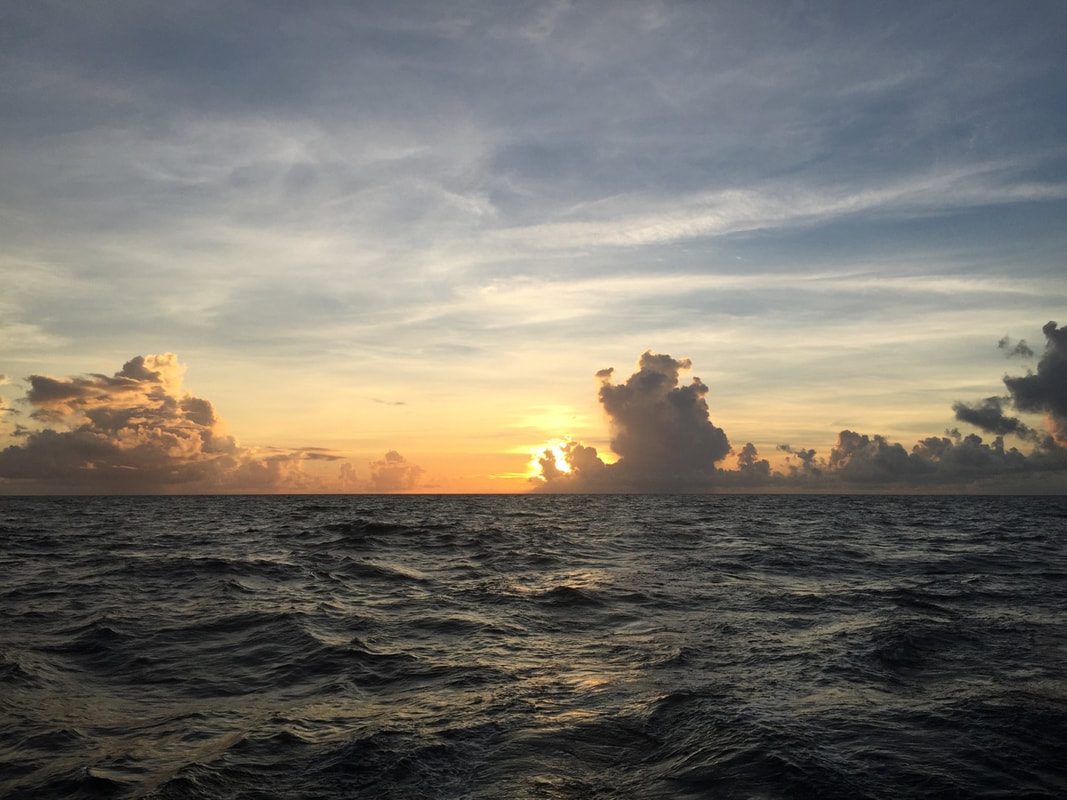
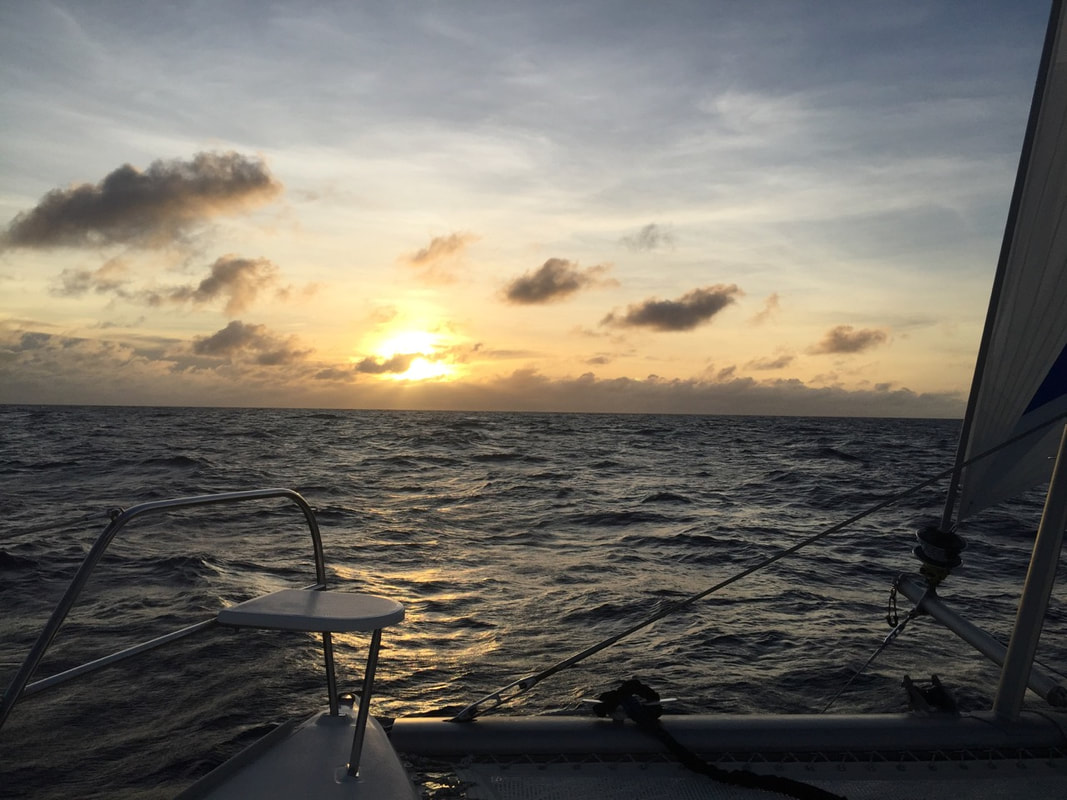



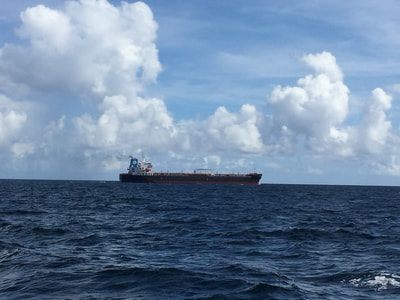




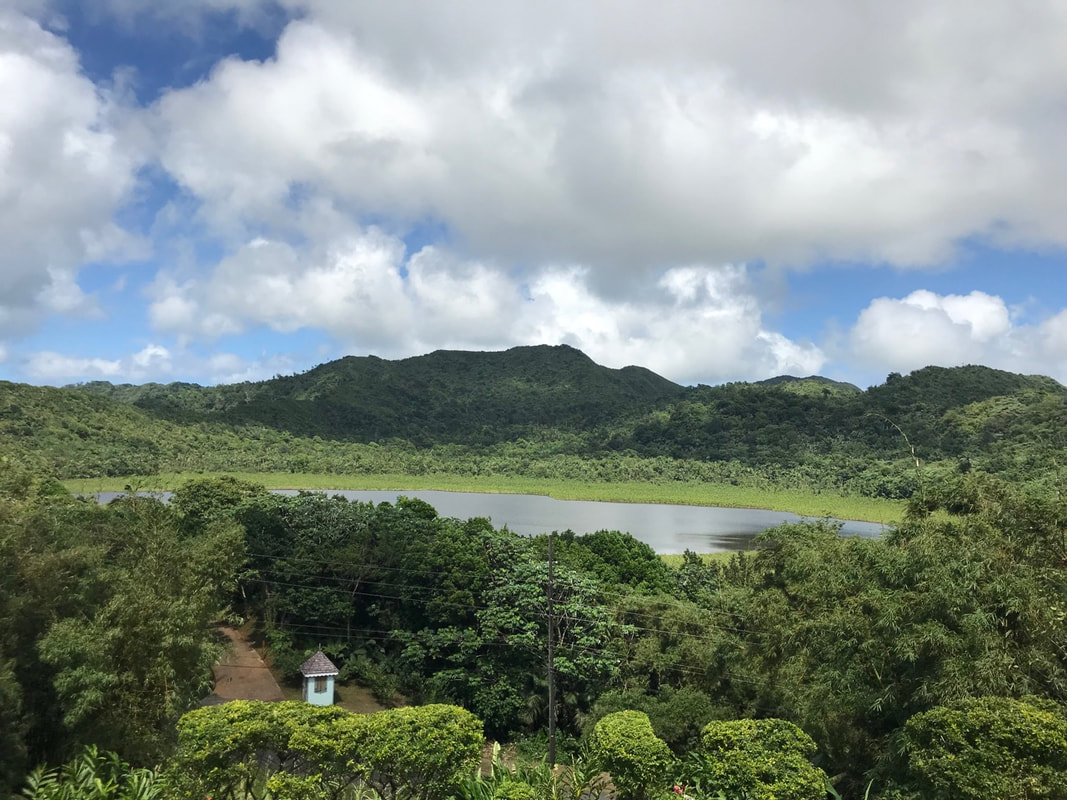
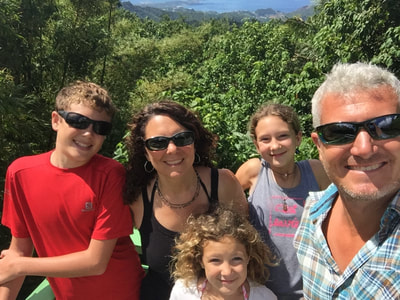

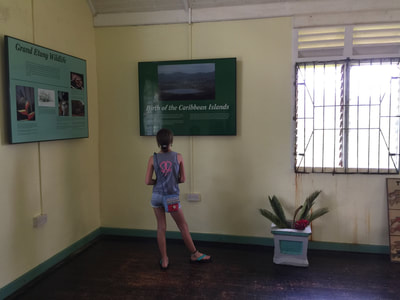



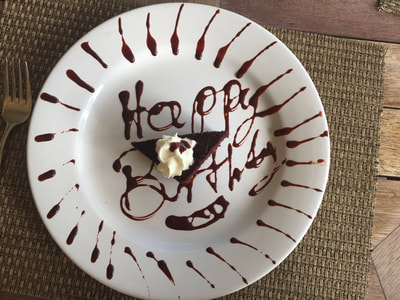
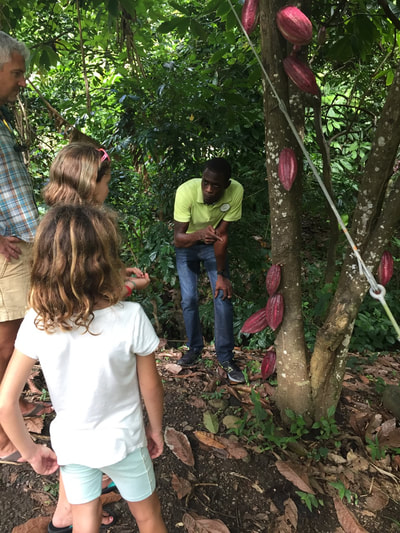



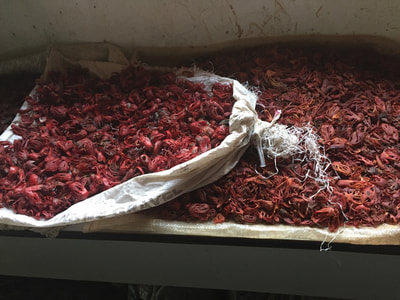

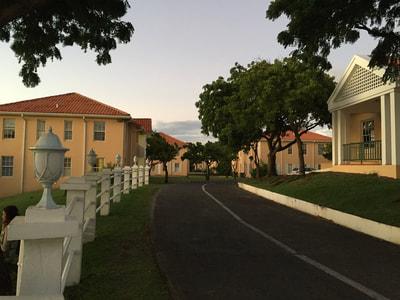


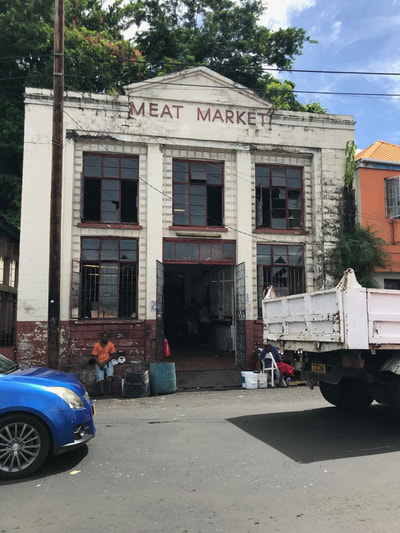




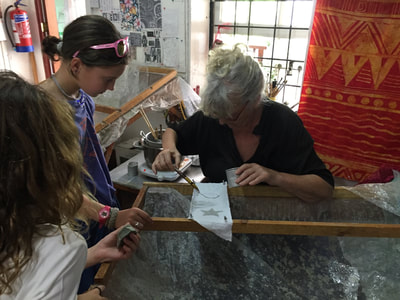


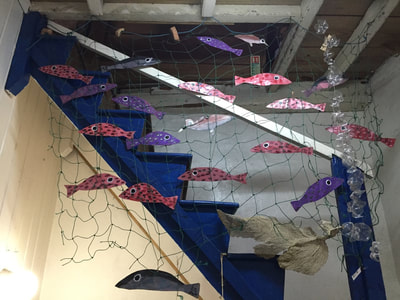

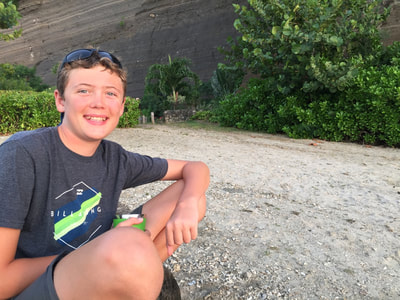

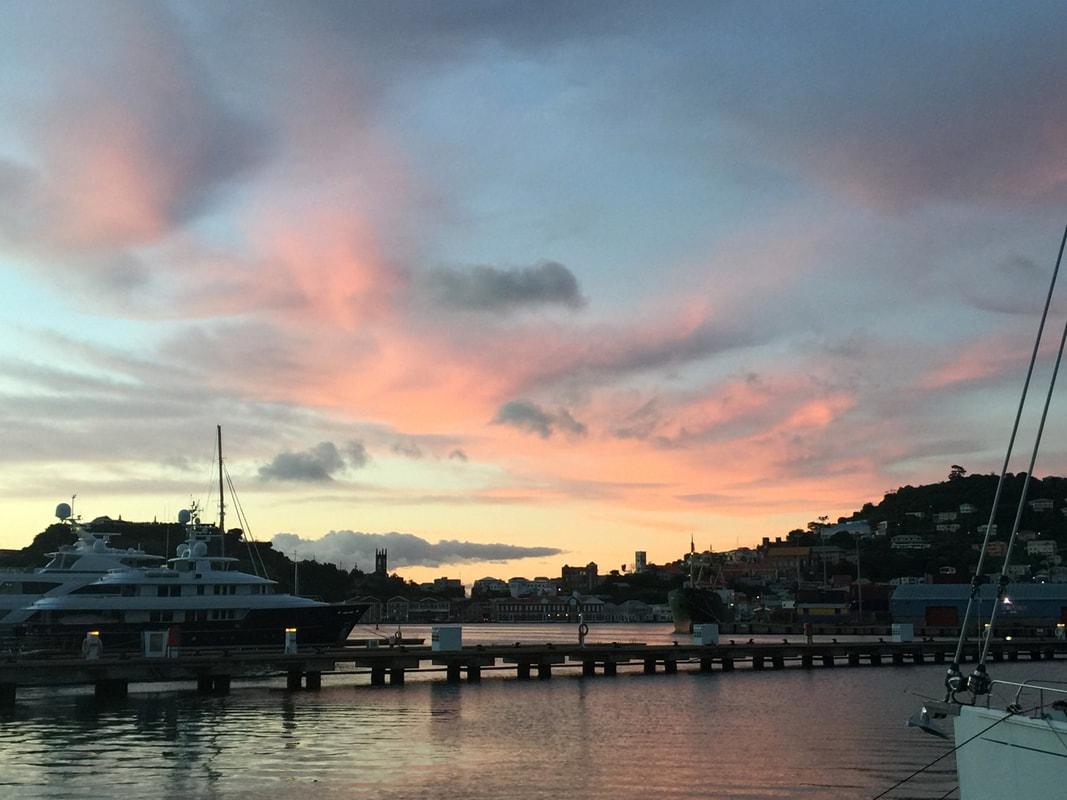
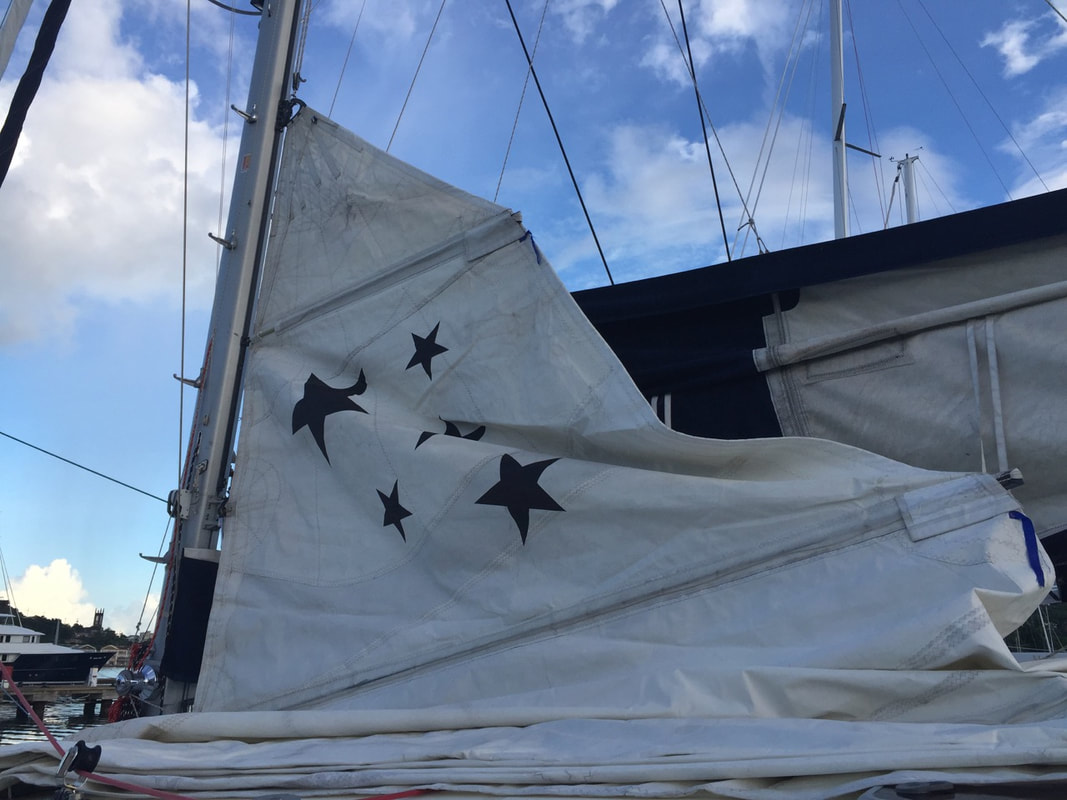




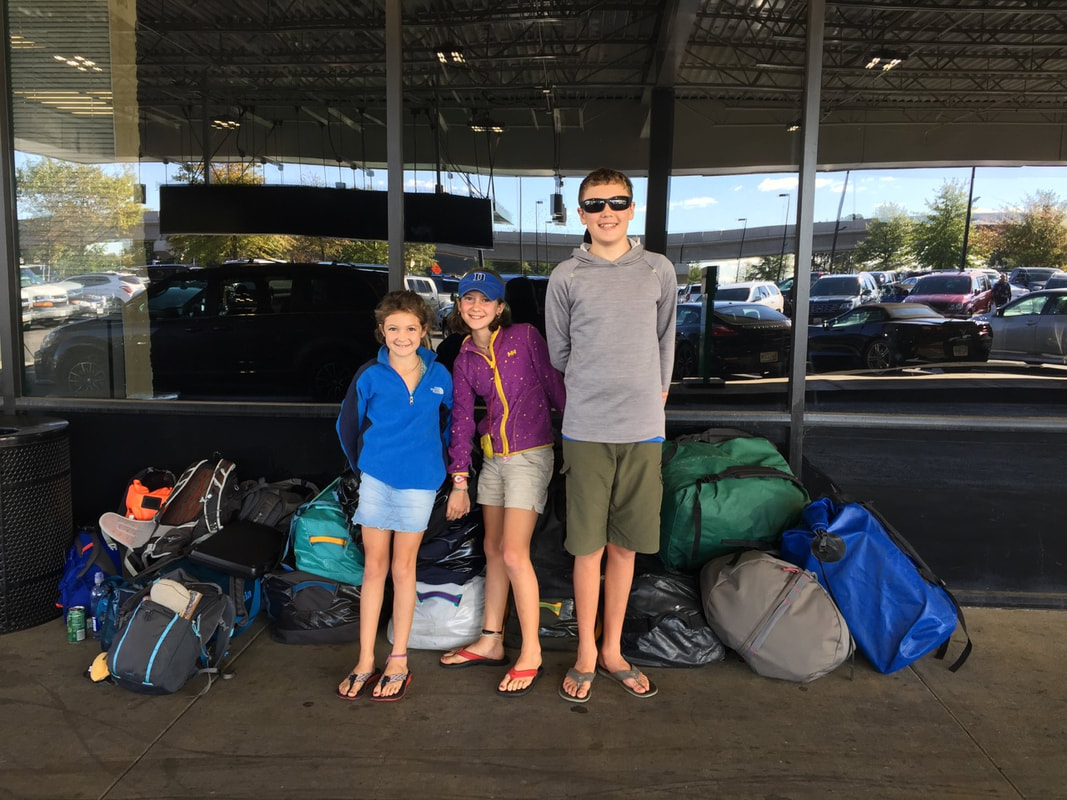
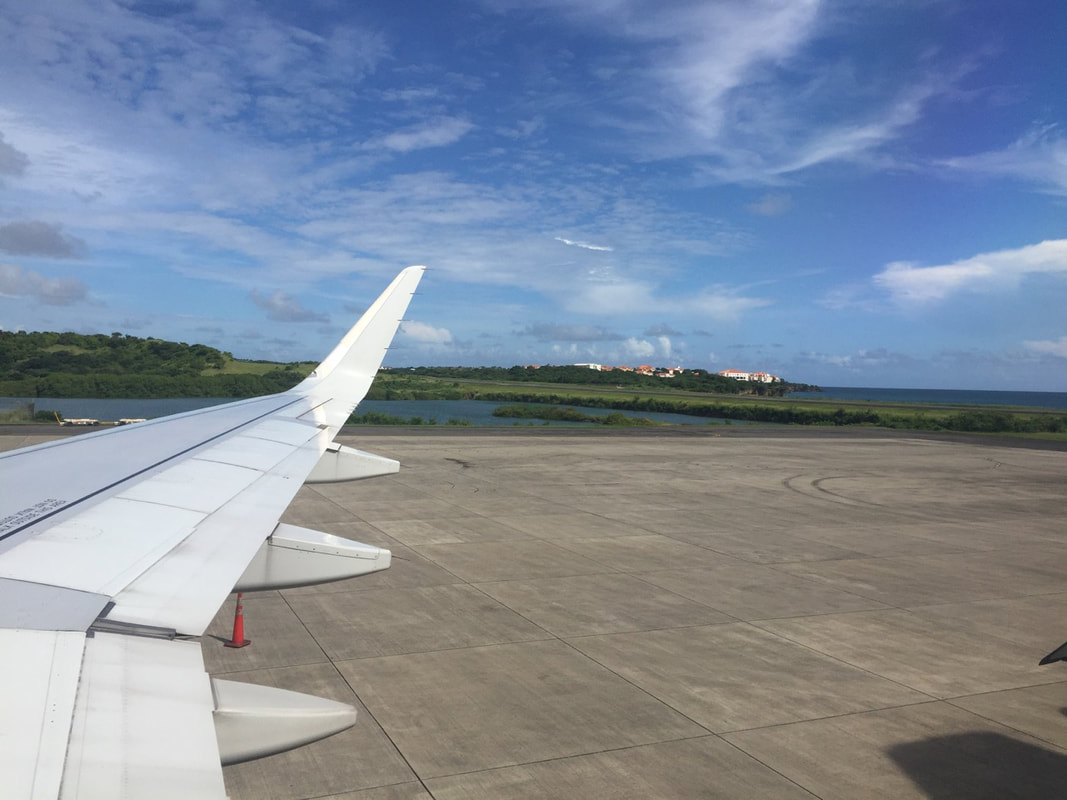


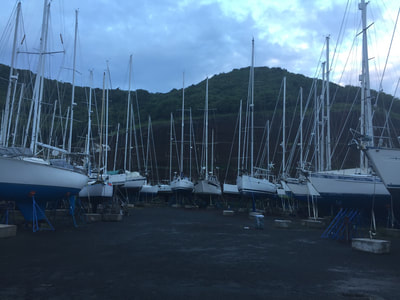
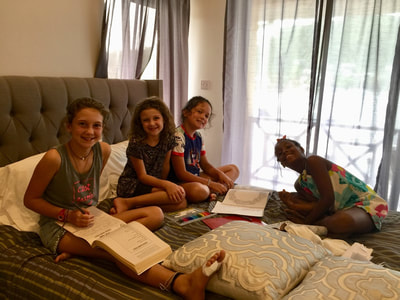






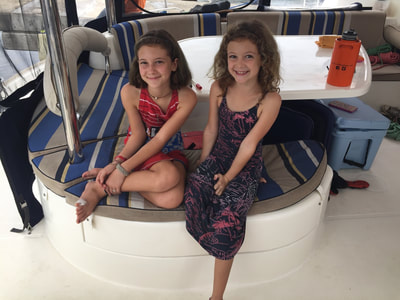

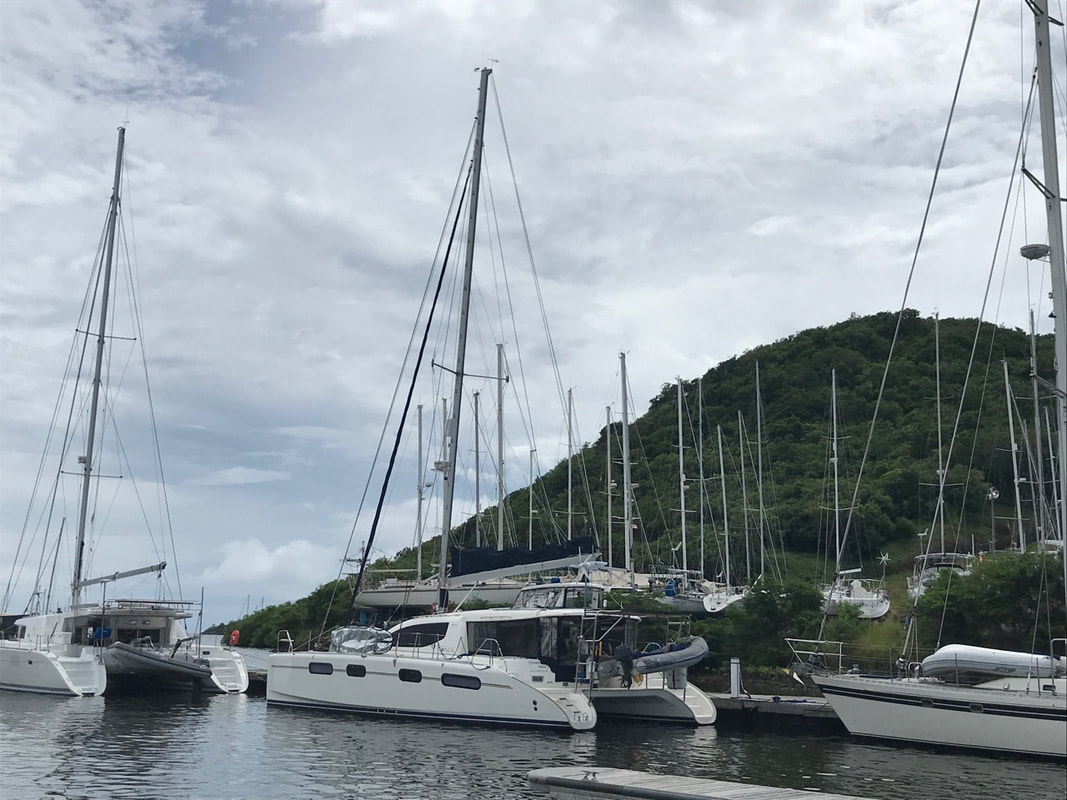

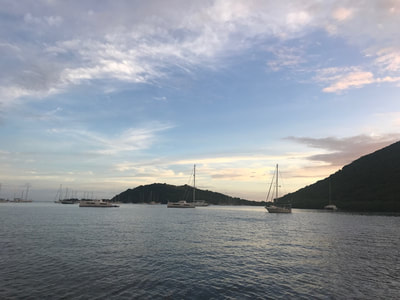

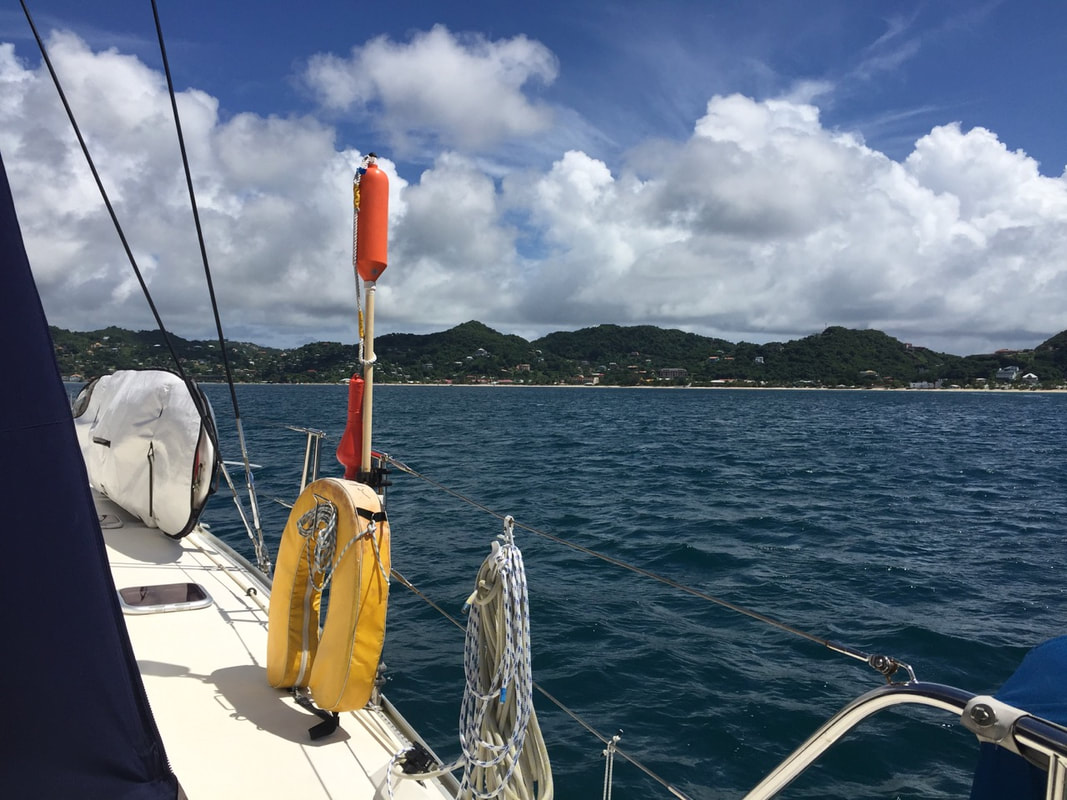
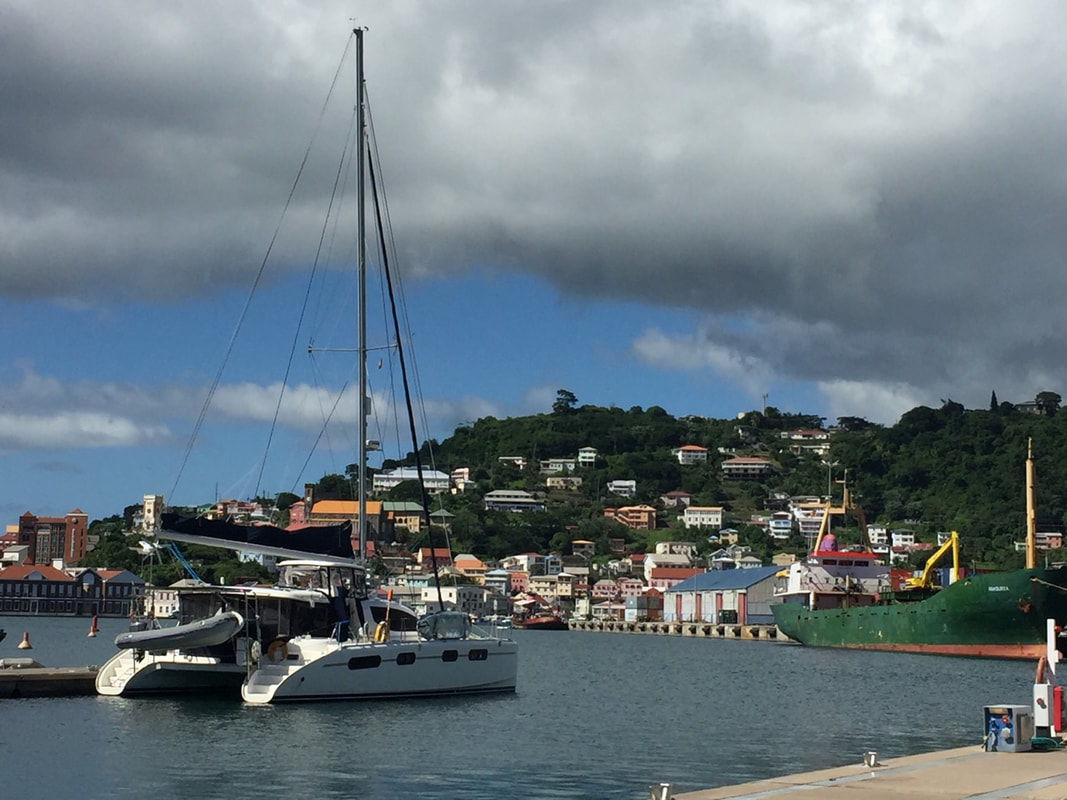
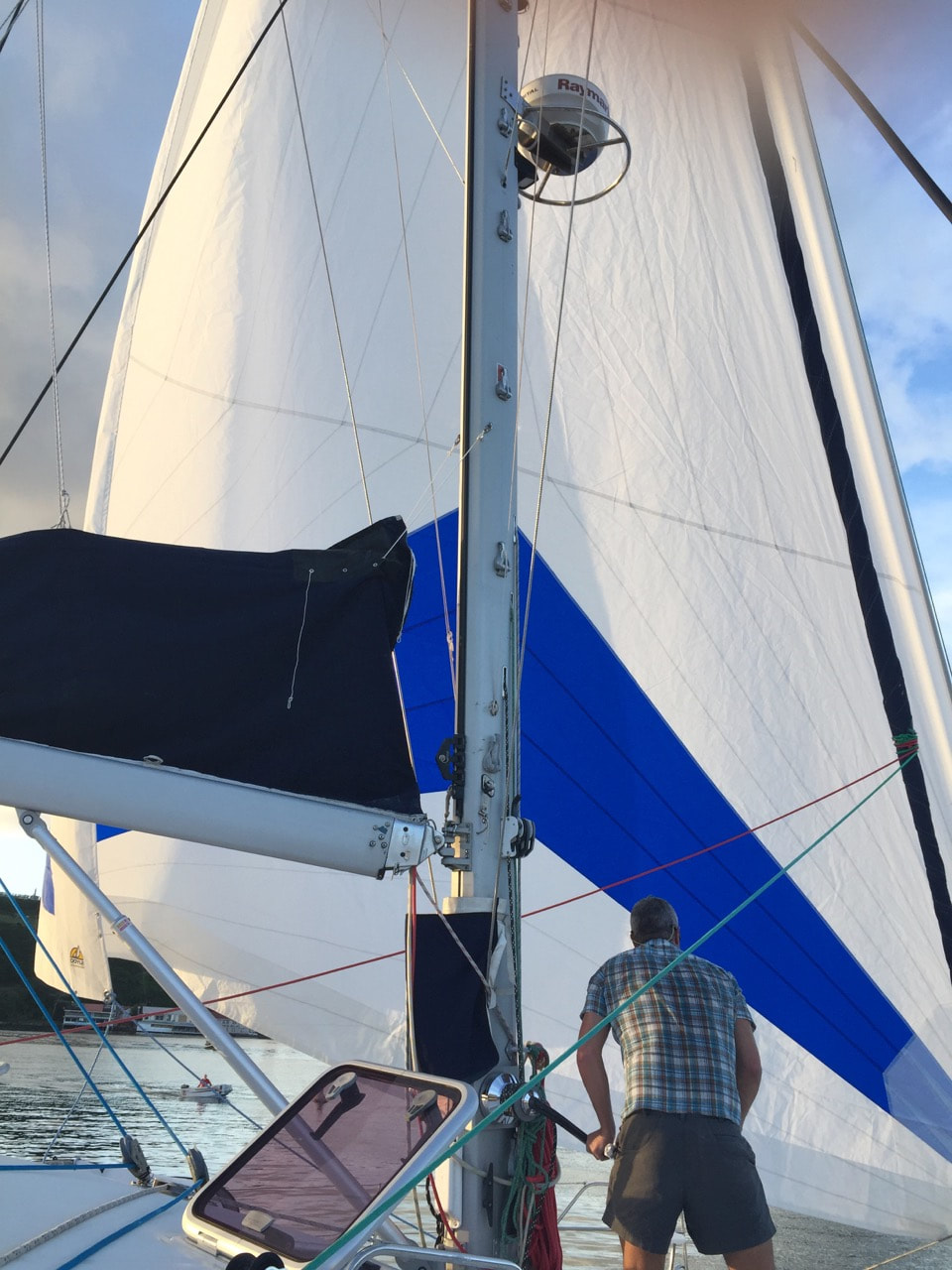
 RSS Feed
RSS Feed